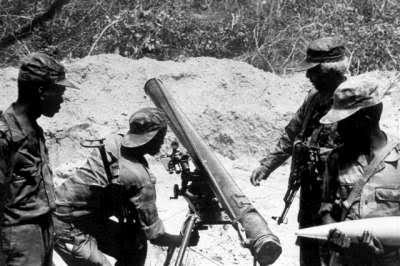For 75 years Namibia was under the control of South Africa but in 1990 the country gained independence to become a sovereign State. There was a lot of fanfare to celebrate the independence of the newest country in the world at the Windhoek Stadium. Songs and cheers filled the air as Namibia’s red, blue, gold, and green flag was hoisted and South Africa’s was lowered.

Sam Nujoma, the leader of the South-West Africa People’s Organization declared Namibia a free nation, sovereign and independent. The question everyone wants answered is what events led to this amazing victory? They are about to be revealed in this article.
Namibia, formerly known as South-West Africa was made a protectorate by Germany in 1884 and a few years later, in 1890, it became a German colony. Following Germany’s defeat in World War I, South Africa took total control of Namibia, the result of a consensus agreement by the League of Nations. South Africa, however, declined numerous requests to grant Namibia her independence, including a call from the UN.
By the 1960s several European countries were granting their colonies independence and a lot of pressure was mounted on South Africa to do the same. By 1966, a resolution by the United Nations ended South Africa’s command over Namibia yet South Africa remained obstinate. South Africa took it a step further by enforcing apartheid on Namibians thus a lot of people suffered at the hands of soldiers of the South African Defense Force.

To counter this Andimba Andima Toivo Ja Toivo started the South West African People’s Organization, otherwise known as SWAPO. Both guerilla forces fought a war for 23 years to take over control of Namibia from South Africa. It was no secret that South Africa wanted to hold on to the country because of the numerous mineral deposits including diamond, vanadium, lithium, and uranium. Another reason was that South Africa was wary of how post-colonial governments had advanced in other parts of Africa and saw this as a threat to its apartheid system.

With the many years of fighting between the SADF and SWAPO lasting 23 years, there were hundreds of casualties. A major reference point was the Kassinga massacre at a Namibian refugee camp on Angolan soil. South Africa finally agreed to the UN’s pleas for Namibia to gain her independence following a peace agreement brokered by the UN. Two years later, March 21, 1990, Namibia gained her independence and the leader of SWAPO at the time, Sam Nujoma, was sworn in as the First President of Namibia. He was sworn in by the Secretary-General of the United Nations Javier Perez de Cuellar.
Even after its independence Namibia still had ties to South Africa and is still a member of the South African Customs Union (SACU). Namibia still accepts the South African Rand as its legal tender till date.
